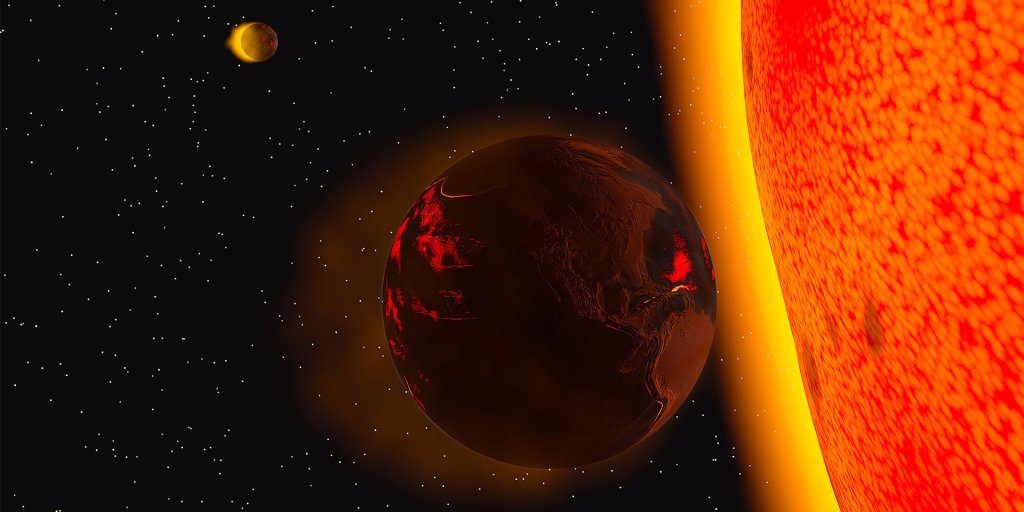Every star has its own habitable zone. It is an orbital region around a star in which an Earth-like planet can possess liquid water on its surface and possibly harbor life.
Liquid water is essential to all life on Earth. The nearer we go, the more heat we will observe and the farther we go, the colder it will become. So if we move closer to the star all the liquid water will become steam, and if we move away, all the liquid water will turn into ice, hence the definition of a habitable zone is based on the sustainability that extraterrestrial life would share with the requirement of liquid water.
Our sun is growing in size, day by day. In around five billion years, it is predicted the sun will turn into a red giant star caused by a helium-burning process. A Red Giant is a luminous giant star of low or intermediate mass around 0.3–8 solar masses (1 solar mass equals to the mass of the sun), in a late phase of stellar evolution. The outer atmosphere is inflated and tenuous, making the radius large and the surface temperature around 4,700 °C or lower. The appearance of the red giant is from yellow-orange to red.
It will expand and swallow Mercury and Venus and most likely Earth as well. Whether our planet is consumed or not, the movement of the sun will mean the end of life on Earth. Because, If it won’t, then the earth will become nearer to the sun and that position will not be a habitable zone that can sustain life on earth.
The human race will have to figure out a way of leaving the planet to a more “Then” habitable home, like Mars. Mars, don’t have liquid water, but as the sun will grow in size and the habitable zone will be pushed away. Mars will then harbor life by winning its position in an extended Habitable zone. Because of the fact, if the sun turns into a red giant, it’s movement and size cause other planets in the solar system to become habitable.
As a result, our technologically advanced future children could figure out a way of leaving the Earth for the more habitable planet of the Solar System.

